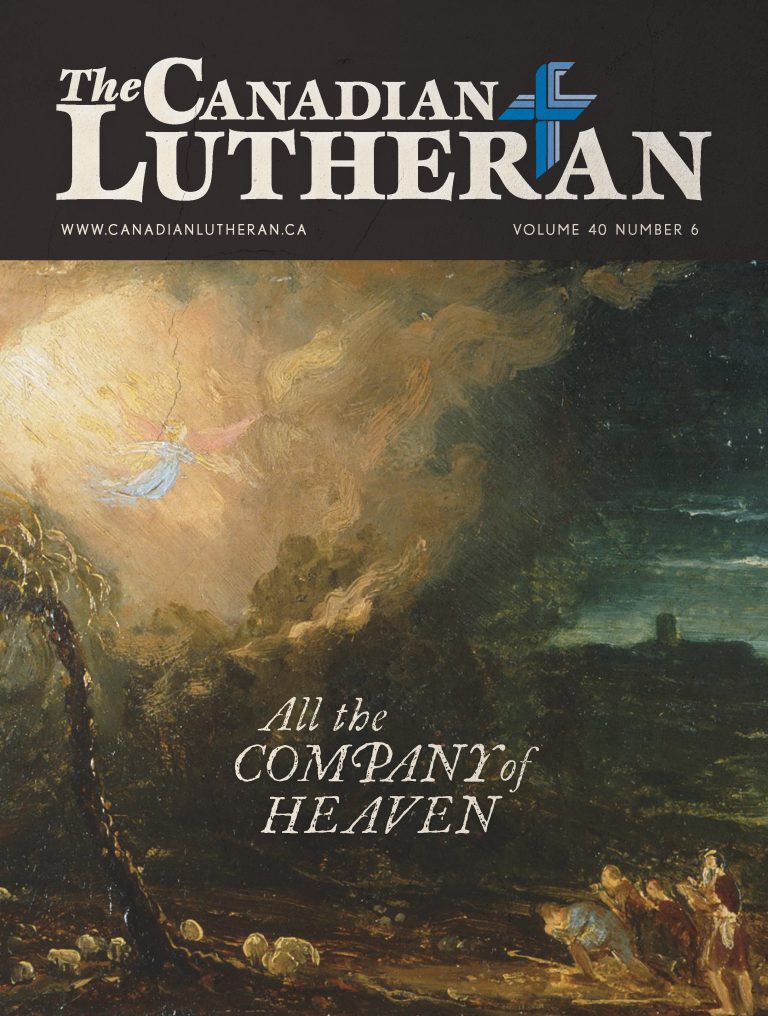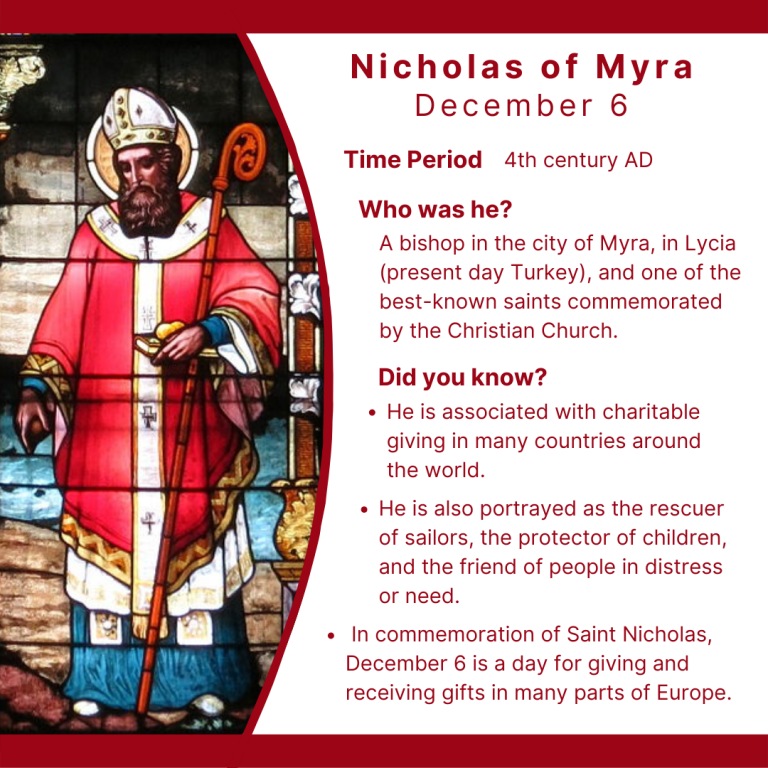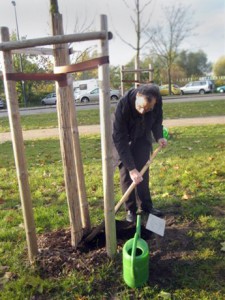President reinforces international relationships

Rev. Reg Quirk, former president of ELCE; Rev. Jon Ehlers, newly-elected president; and Rev. Dr. Robert Bugbee, LCC president.
Strengthening ties with church partners in England and internationally was the goal behind a European trip by Lutheran Church–Canada president Rev. Dr. Robert Bugbee in October. “Thanks to Aeroplan miles, it was a wonderful blessing to have my wife, Gail, with me for this travel,” the president quipped.
In Cambridge, President Bugbee attended the annual “synod” (convention) of the Evangelical Lutheran Church in England (ELCE). This partner church began in the 1890s when two London-area congregations asked The Lutheran Church—Missouri Synod (LCMS) to serve them. The arrangement continued until after World War II when the British church became self-governing under the formative influence of a Canadian, Rev. Dr. E. George Pearce. Under Chairman Pearce’s steady leadership, the initial two congregations reached out to other parts of Great Britain so that the ELCE now numbers 13 churches in England, Scotland and Wales.
Resurrection Lutheran Church in Cambridge hosted the convention. It is also the site of Westfield House, the ELCE’s seminary, which operates with ties to Cambridge University. President and Mrs. Bugbee attended the convention sessions which included fascinating reports from each congregation. “In western Europe, where the culture is so secularized, it’s a real challenge to provide a faithful witness to Christ,” the president observed. “I have deep respect for our ELCE brother pastors and lay leaders who keep at it year after year.”
At the close of the convention, President Bugbee preached for the installation of the ELCE’s new chairman (synod president), Rev. Jon Ehlers. The convention also expressed its gratitude to outgoing chairman, Dr. Reginald Quirk, who wore three “hats,” serving not only the synod, but also Westfield House and Resurrection Church as theological instructor and pastor. READ MORE
Following the British portion of their trip, the Bugbees travelled to Germany where the International Lutheran Council’s (ILC) executive committee held its annual meeting in Martin Luther’s city of Wittenberg. LCC’s president is currently the North American area representative on the committee. ILC currently includes 34 churches around the world bound to each other by a commitment to the Scriptures as the revealed Word of God, and to the Lutheran confessions as an authoritative understanding of the Word. In recent years, churches in Africa, Asia and in eastern Europe have expressed strong interest in the work of ILC. Many have historic ties to the Lutheran World Federation (LWF), but are troubled with the decisions taken by some LWF-member churches regarding same-gender blessings, for example.
Dr. Samuel Nafzger of St. Louis, ILC’s longtime executive secretary, announced his retirement during the Wittenberg meeting. In early 2011, LCC President Emeritus Dr. Ralph Mayan will succeed him and serve a two-year term as interim executive secretary until the organization arranges for permanent staffing.
While in Wittenberg, President Bugbee and other ILC leaders planted trees in the newly-dedicated “Luther Garden,” which will attract visitors from around the world. “When Canadians travel to Wittenberg between now and the 500th Anniversary of the Reformation in 2017, they should make sure to stop by the garden and let us know how Tree No. 143 is doing,” the president remarked. “That’s our LCC tree. We were also honoured to plant an additional tree on behalf of our mission partner, the Iglesia Luterana Sínodo de Nicaragua.”
Wittenberg has undergone major improvements and restoration since the fall of East Germany in 1990. One sad socialist legacy is that only about 20 percent of its population is even nominally Christian. This past summer, LCC’s partner church in Germany, SELK began scheduling regular worship opportunities in Wittenberg as a way to begin outreach there. In addition, the LCMS and SELK continue moving forward on the “Wittenberg Project” which is designed to provide a lasting Biblically-oriented Lutheran presence in that community.




